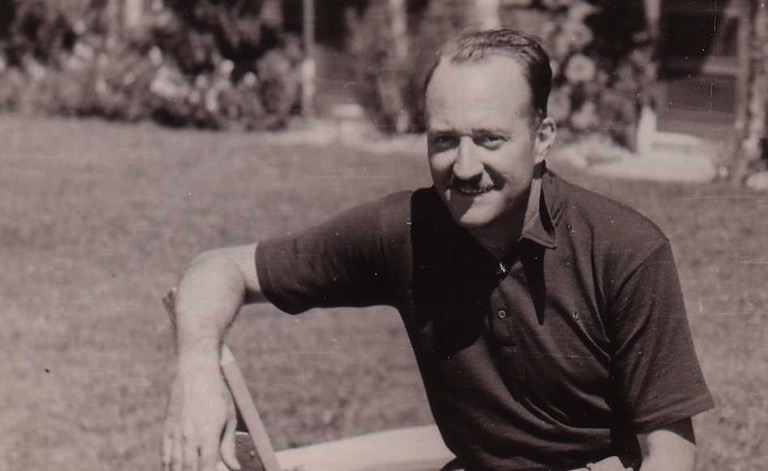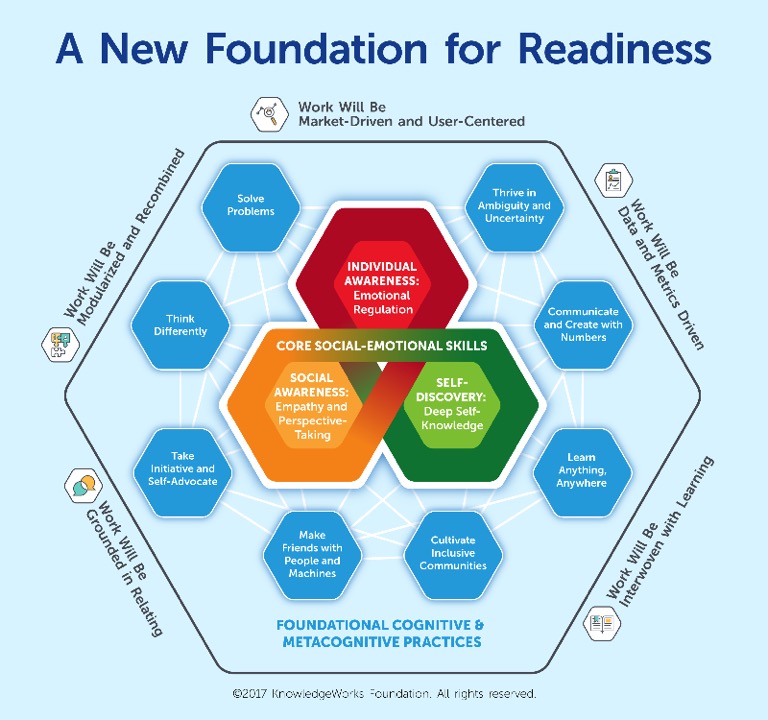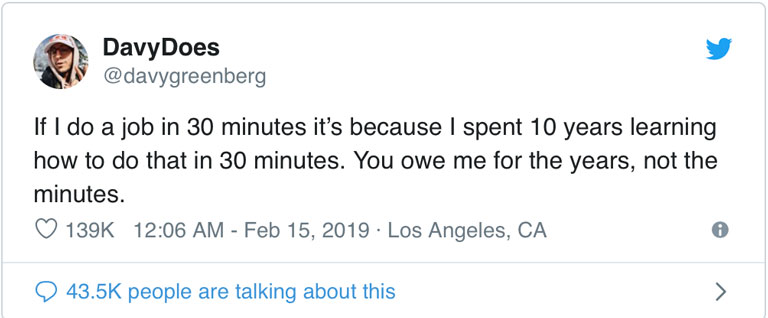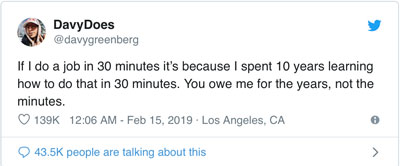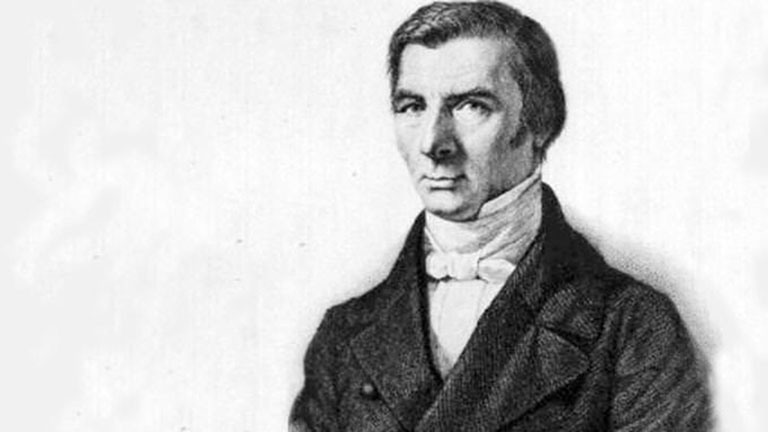Talk to any entrepreneur or small business owner and you’ll quickly learn that starting a business requires a lot of work. Generating a business idea is a great starting point, but an idea doesn’t become a business without effort. Some budding entrepreneurs understand the effort necessary to create a business, but they might not be familiar with the many steps required to launch a business venture. If you’re willing to put in the effort to build a business, you’re going to want to know the steps needed to reach your goals. Tasks like naming the business and creating a logo are obvious, but what about the less-heralded, equally important steps? Whether it’s determining your business structure or crafting a detailed marketing strategy, the workload can quickly pile up. Rather than spinning your wheels and guessing at where to start, follow this 10-step checklist to transform your business from a lightbulb above your head to a real entity.In this article…
1. Refine your idea.
If you’re thinking about starting a business, you likely already have an idea of what you want to sell, or at least the market you want to enter. Do a quick search for existing companies in your chosen industry. Learn what current brand leaders are doing and figure out how you can do it better. If you think your business can deliver something other companies don’t (or deliver the same thing, but faster and cheaper), you’ve got a solid idea and are ready to create a business plan.
“In the words of Simon Sinek, ‘always start with why,'” said Glenn Gutek, CEO of Awake Consulting and Coaching. “It is good to know why you are launching your business. In this process, it may be wise to differentiate between [whether] the business serves a personal why or a marketplace why. When your why is focused on meeting a need in the marketplace, the scope of your business will always be larger than a business that is designed to serve a personal need.”
Another option is to open a franchise of an established company. The concept, brand following, and business model are already in place; all you need is a good location and the means to fund your operation. Regardless of which option you choose, it’s vital to understand the reasoning behind your idea. Stephanie Desaulniers, director of operations and women’s business programs at Covation Center, cautions entrepreneurs from writing a business plan or worrying about a business name before nailing down the idea’s value.
“Many people think they have a great idea and jump into launching their business without thinking through who their customers will be, or why these people should want to buy from or hire them,” Desaulniers said. “Second, you need to clarify why you want to work with these customers – do you have a passion for making people’s lives easier? Or enjoy creating art to bring color to their world? Identifying these answers helps clarify your mission. Third, you want to define how you will provide this value to your customer and how to communicate that value in a way that they are willing to pay.”
During the ideation phase, you need to iron out the major details. If the idea isn’t something you’re passionate about or if there’s not a market for your creation, it might be time to brainstorm other ideas.
2. Write a business plan.
Once you have your idea in place, you need to ask yourself a few important questions: What is the purpose of your business? Who are you selling to? What are your end goals? How will you finance your startup costs? These questions can be answered in a well-written business plan.
A lot of mistakes are made by new businesses rushing into things without pondering these aspects of the business. You need to find your target customer base. Who is going to buy your product or service? If you can’t find evidence that there’s a demand for your idea, then what would be the point?
Conducting thorough market research on your field and demographics of potential clientele is an important part of crafting a business plan. This involves conducting surveys, holding focus groups and researching SEO and public data. A guide to conducting market research can be found on our sister site, Business.com. It’s also a good idea to consider an exit strategy as you compile your business plan. Generating some idea of how you’ll eventually exit the business forces you to look to the future.
“Too often, new entrepreneurs are so excited about their business and so sure everyone everywhere will be a customer that they give very little if any, time to show the plan on leaving the business,” said Josh Tolley CEO of both Tribal Holdings and Kavana. “When you board an airplane, what is the first thing they show you? How to get off of it. When you go to a movie, what do they point out before the feature begins to play? Where the exits are. Your first week of kindergarten, they line up all the kids and teach them fire drills to exit the building. Too many times I have witnessed business leaders that don’t have three or four pre-determined exit routes. This has led to lower company value and even destroyed family relationships.”
A business plan helps you figure out where your company is going, how it will overcome any potential difficulties and what you need to sustain it. A full guide to writing your plan can be found here, and when you’re ready to put pen to paper, these free templates can help.
3. Assess your finances.
Starting any business has a price, so you need to determine how you’re going to cover those costs. Do you have the means to fund your startup, or will you need to borrow money? If you’re planning to leave your current job to focus on your business, do you have money put away to support yourself until you start making a profit? Find out how much you’re going to need.
Experts generally agree that startup businesses often fail because they run out of money too quickly before turning a profit. It’s never a bad idea to overestimate the amount of startup capital you need, as it can be a while before the business begins to bring in sustainable revenue. Additionally, don’t overspend when starting a business. Understand the types of purchases that make sense for your business and avoid overspending on fancy new equipment that won’t help you reach your business goals.
“A lot of startups tend to spend money on unnecessary things,” said Jean Paldan, founder and CEO of Rare Form New Media. “We worked with a startup that had two employees but spent a huge amount on office space that would fit 20 people. They also leased a professional high-end printer that was more suited for a team of 100 (it had keycards to track who was printing what and when). Spend as little as possible when you start and only on the things that are essential for the business to grow and be a success. Luxuries can come when you’re established.”
If you need financial assistance, a commercial loan through a bank is a good starting point, although these are often difficult to secure. If you are unable to take out a bank loan, you can apply for a small business loan through the Small Business Administration (SBA) or an alternative lender.
Startups requiring significant funding upfront may want to consider an investor. Investors can provide several million dollars or more to a fledgling company, with the expectation that the backers will have a hands-on role in running your business. Alternatively, you could launch an equity crowdfunding campaign to raise smaller amounts of money from multiple backers. Crowdfunding has helped numerous companies in recent years, and there are dozens of reliable crowdfunding platforms designed for different types of business. It’s not challenging to find a good option for your business should you elect to launch a crowdfunding campaign.
You can learn more about each of these capital sources and more in our guide to startup finance options.
4. Determine your legal business structure.
Before you can register your company, you need to decide what kind of entity it is. Your business structure legally affects everything from how you file your taxes to your personal liability if something goes wrong.
If you own the business entirely by yourself and plan to be responsible for all debts and obligations, you can register for a sole proprietorship. Be warned that this route can directly affect your personal credit. Alternatively, a partnership, as its name implies, means that two or more people are held personally liable as business owners. You don’t have to go it alone if you can find a business partner with complementary skills to your own. It’s usually a good idea to add someone into the mix to help your business flourish.
If you want to separate your personal liability from your company’s liability, you may want to consider forming one of several types of corporations. This makes a business a separate entity apart from its owners, and, therefore, corporations can own property, assume liability, pay taxes, enter into contracts, sue and be sued like any other individual. One of the most common structures for small businesses, however, is the limited liability corporation (LLC). This hybrid structure has the legal protections of a corporation while allowing for the tax benefits of a partnership.
“Corporations, especially C-corporations, are especially suitable for new businesses that plan on ‘going public’ or seeking funding from venture capitalists in the near future,” said Deryck Jordan, managing attorney at Jordan Counsel.
Ultimately, it is up to you to determine which type of entity is best for your current needs and future business goals. More details about the different business structures can be found here. If you’re struggling to make up your mind, it’s not a bad idea to discuss the decision with a business or legal adviser.
Read the Whole Article
Do you find these posts helpful and informative? Please CLICK HERE to help keep us going!





